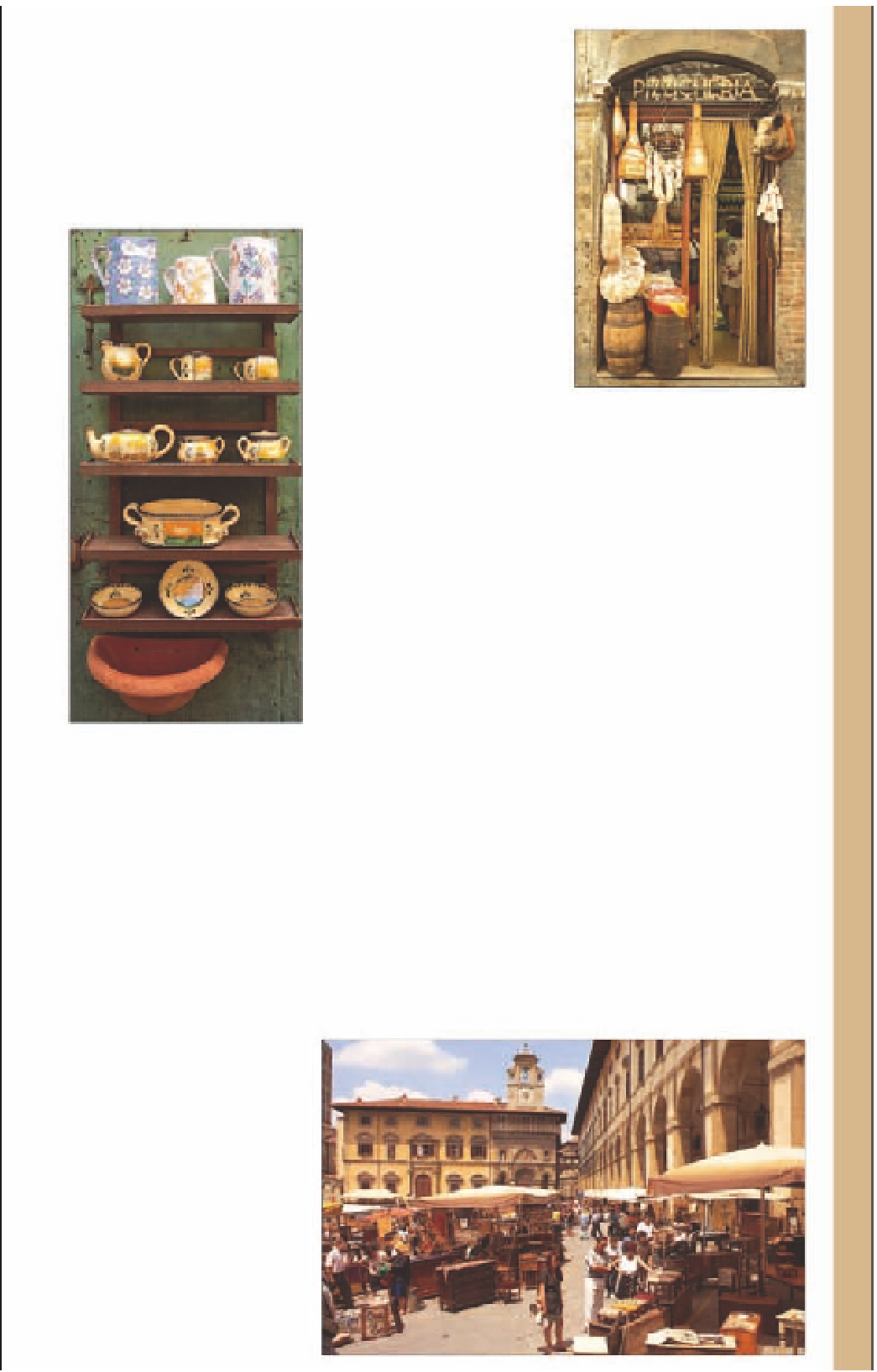Travel Reference
In-Depth Information
Shopping in Tuscany
Small towns throughout Tuscany have a multitude of
shops selling a range of handicrafts, foods and some
of the best wine in Italy. These are invariably displayed
in small shops or at the frequent markets, seasonal fairs
and local celebrations
(see pp34-9)
, which are such
an integral part of Tuscan rural life.
For textiles, Lucca lays claim
to a rich tradition of silk
manufacture, as well as
embroidery and hand-woven
fabrics, reflecting the strong
rural craft tradition of the
nearby Garfagnana area.
Rustic crafts are common in
the Mugello and Casentino.
A Tuscan delicatessen
FOOD AND WINE
from the farm or from shops in
local towns. In Pienza, shop
shelves are laden with local
cheeses
(see p226)
, cured
meats, wines and grappas. In
Grosseto you will find truffles.
Siena is renowned for its
panforte
, a dark cake spiced
with cloves and cinnamon,
which has been produced
since the Middle Ages. Biscuits
include
cavallucci
(ground
walnuts and aniseed) and
ricciarelli
, made from almonds,
orange peel and honey.
Excursions into Tuscany should
be accompanied by visits to a
local vineyard where wine is
sold directly from the cellars.
The Chianti region is studded
with farms producing their
own wines
(see p229)
. Greve
has several good wine outlets,
and during the third week of
September there is the annual
wine festival, the Rassegna del
Chianti Classico
(see p38).
The excellent Vernaccia, a
white wine, is typical of the
San Gimignano area. The
vineyards around Montalcino
produce some of the best
wine in Italy
(see p224)
.
Tuscany's rich gastronomic
tradition is reflected in the
profusion of local products.
The main streets of towns
such as Greve, Montalcino,
San Gimignano and Pienza
have a range of food shops.
Sheep's cheese
(pecorino),
produced around the area of
Crete, can be bought directly
Display of local pottery
MARKETS IN TUSCANY
GIFTS AND SOUVENIRS
Markets are aplenty throughout
the region. Particularly famous
is the Mercato dell'Antiquariato,
which sells goods from antique
furniture to bric-à-brac. It takes
place in Arezzo on the Piazza
Grande on the first weekend
of each month, in Pisa on
the Ponte di Mezzo on the
second weekend, and in
Lucca in Piazza San Martino
on the third weekend.
Characteristic ceramics are
found throughout the region,
from the famed raw terracotta
of Impruneta to the decorated
glazed pottery of Montelupo
and Siena. In San Gimignano,
look out for shops selling
artistic ceramics
(see p30)
and
hand-woven fabrics.
The best in marble can be
found in Pietrasanta and
Carrara
(see p172)
. The famous
white marble of the Alpi
Apuane still serves local crafts-
men, who make busts and
replicas of sculpted works of
art, as in Michelangelo's day.
The Etruscans mastered the
art of working alabaster, and
today the tradition lives on in
Volterra, where many shops
sell a range of souvenirs
(see
p166)
. The Etruscans also had
knowledge of the minerals and
precious stones typical of the
volcanic Colline Metallifere,
Maremma and Elba, the latter
famous for its quartz and
opals
(see pp234-5).
The Mercato dell'Antiquariato on the Piazza Grande in Arezzo





































